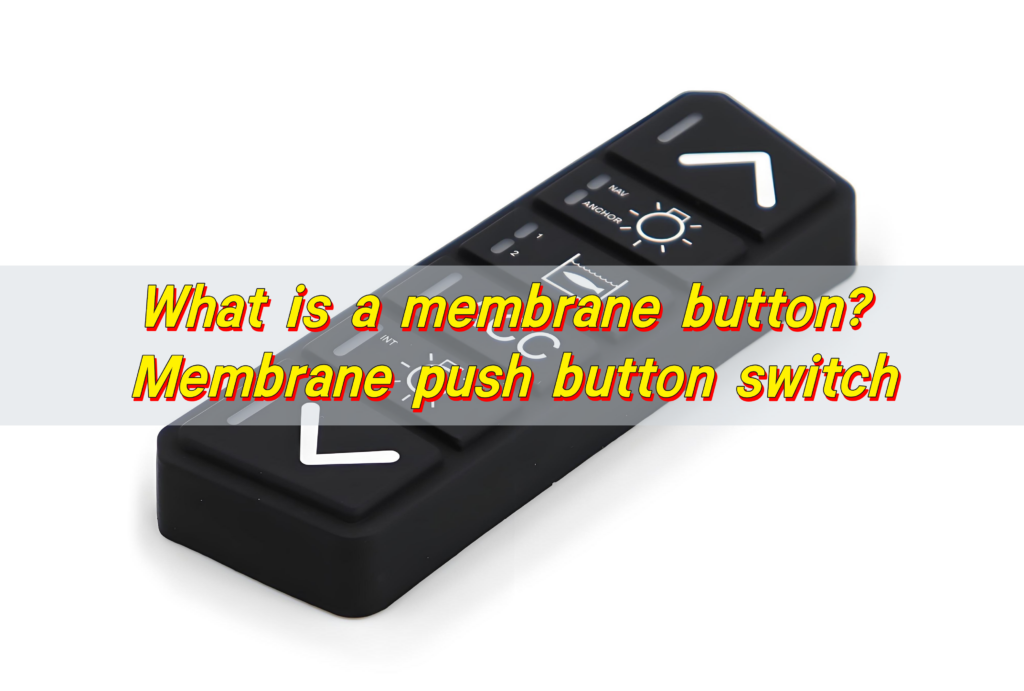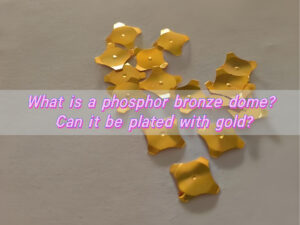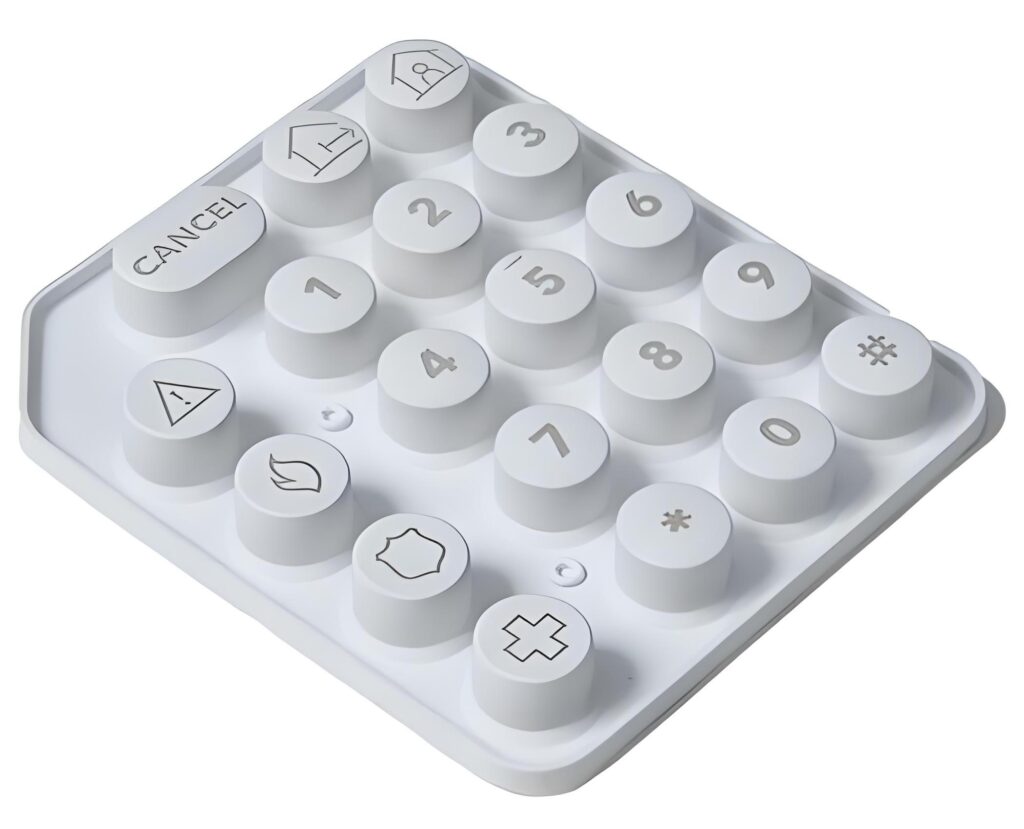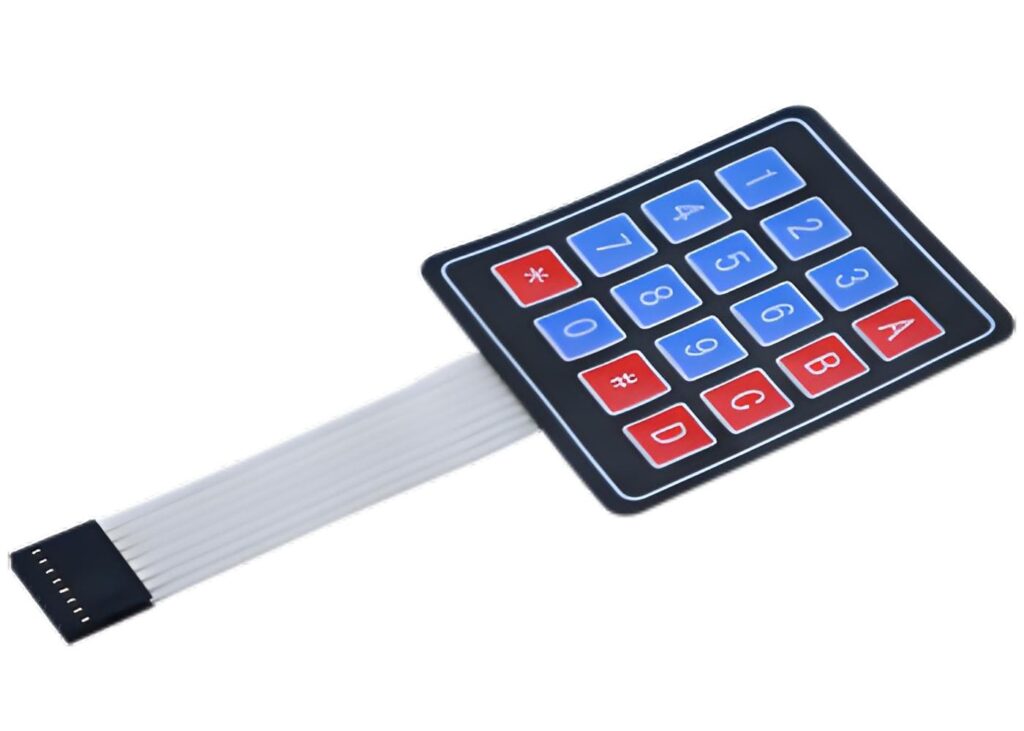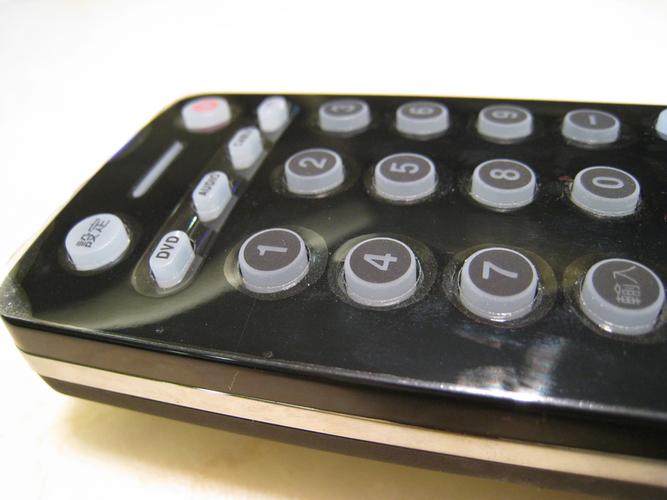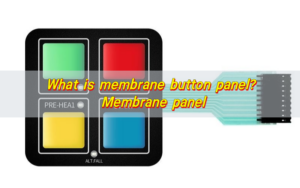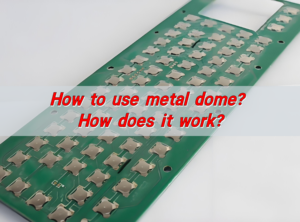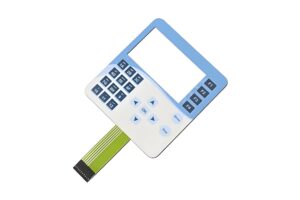Membrane button is a touch switch made of multiple layers of film material. A membrane button switch is an electronic component that switches the circuit on and off by pressing the membrane button. It consists of a panel, a conductive layer, an insulating layer, and a circuit layer. When pressed, the conductive layer contacts the circuit and conducts, and returns to its original state when released.
Why use membrane buttons?
Membrane buttons are incredibly popular for a reason. They resist dust, moisture, and chemicals, making them ideal for harsh environments. Hospitals, food industries, and outdoor systems rely on them daily.
Another key reason is their low cost and high efficiency. They can be mass-produced, customized, and integrated into various shapes and sizes.
Also, users get consistent tactile feedback when a tactile dome is integrated. That physical feedback confirms input, reducing errors and improving user experience.
What material is membrane button?
The membrane button’s body is made from multiple thin layers of flexible materials. The most common layers include:
- Top Graphic Overlay: Made from PET or polycarbonate, this is the face of the button where designs, icons, and colors appear.
- Spacer Layer: Separates the top and bottom circuits to prevent accidental contact.
- Circuit Layer: Printed silver ink or copper traces form the electrical pathways.
- Back Adhesive Layer: Secures the entire switch assembly onto the product surface.
Inside, the tactile dome sits beneath the overlay. Often made from stainless steel, the dome creates the clicking sensation. In rubber membrane buttons, silicone domes take its place, offering a softer feel.
What is the difference between tactile dome and membrane buttons?
Membrane button is the full switch structure. It includes all the layers, circuits, and graphics. It works when pressed, completing a circuit and sending a signal.
Tactile dome is a part inside the membrane switch. It’s a metal or rubber dome added to the design to provide physical feedback. The dome flexes when pressed and returns to shape once released.
So, tactile domes are not a separate type of button. They’re an enhancement that makes the membrane button feel more responsive and user-friendly. Think of them as the heart of tactile membrane buttons.
How is a custom membrane button designed?
Designing a custom membrane button starts with function. What will the button do? How many buttons are needed? What shape and layout suit the product?
First, BEST Technology engineers select a graphic overlay design. They select materials, thickness, and colors.
Next is circuit design. Engineers decide on silver ink, copper flex, or PCB membrane button based on voltage and signal needs. Some designs use backlit LEDs for visibility in dark environments.
Then comes the dome selection. Do you need a tactile dome or a softer rubber dome? The dome height and force affect user feel. You can even create custom tactile dome buttons with specific feedback strength.
Finally, the layers get assembled with adhesives. Cutouts, embossing, and waterproof sealing may also be added. When everything is in place, the result is a custom membrane button ready for any application.
How does a membrane button work on a PCB?
In a PCB membrane button, the membrane switch sits directly on the circuit board. When pressed, the button completes the electrical path on the PCB. It acts like a bridge between the open circuit paths.
Tactile domes help create reliable contact. When pushed, the dome collapses, touching the conductive pad below. This action allows current to flow. Once released, the dome pops back, and the circuit opens again.
This design is clean and efficient. No complex soldering or moving parts are needed. It allows for a thinner and lighter assembly. Plus, it simplifies repairs. If needed, you can peel and replace just the membrane button pad.
What’s the lifespan of membrane buttons?
Lifespan depends on the quality of materials and dome type. But in general, a well-made membrane button switch lasts between 1 million to 10 million cycles.
Metal tactile domes usually last longer. Their rebound strength and durability outshine silicone domes. However, rubber domes are quieter and better for medical or indoor settings.
Environmental conditions also play a role. A membrane button in a sealed panel can handle humidity, spills, or dust without damage. This makes them a reliable solution in demanding workplaces.
What is the function of a membrane button panel?
Membrane button panel brings multiple membrane switches together into one interface. It acts as the control hub of a system.
Common in medical equipment, control panels, and machinery, these panels help operators manage multiple functions easily. Each membrane button pad can be labeled and backlit for better usability.
The panel’s surface can be entirely sealed. This protects against contaminants and extends product life. In environments where sanitation matters, such as food production or labs, this sealed surface is invaluable.
Another strength is customization. A membrane button controller can be tailored with various circuit paths, lighting options, and feedback features. Whether it’s for an ATM, vending machine, or gaming controller, there’s always a membrane keypad button design that fits.
Transitioning from older mechanical systems to membrane switch keyboards also offers space-saving benefits. These panels weigh less and consume less space, which is critical in compact devices.
Conclusion:
Membrane buttons are more than just simple switches. They’re essential components that power everything from your microwave to your medical monitor. Their compact structure, tactile dome integration, and customizable designs offer unmatched flexibility.
To learn more or request a custom design, reach out to us at sales@metal-domes.com


